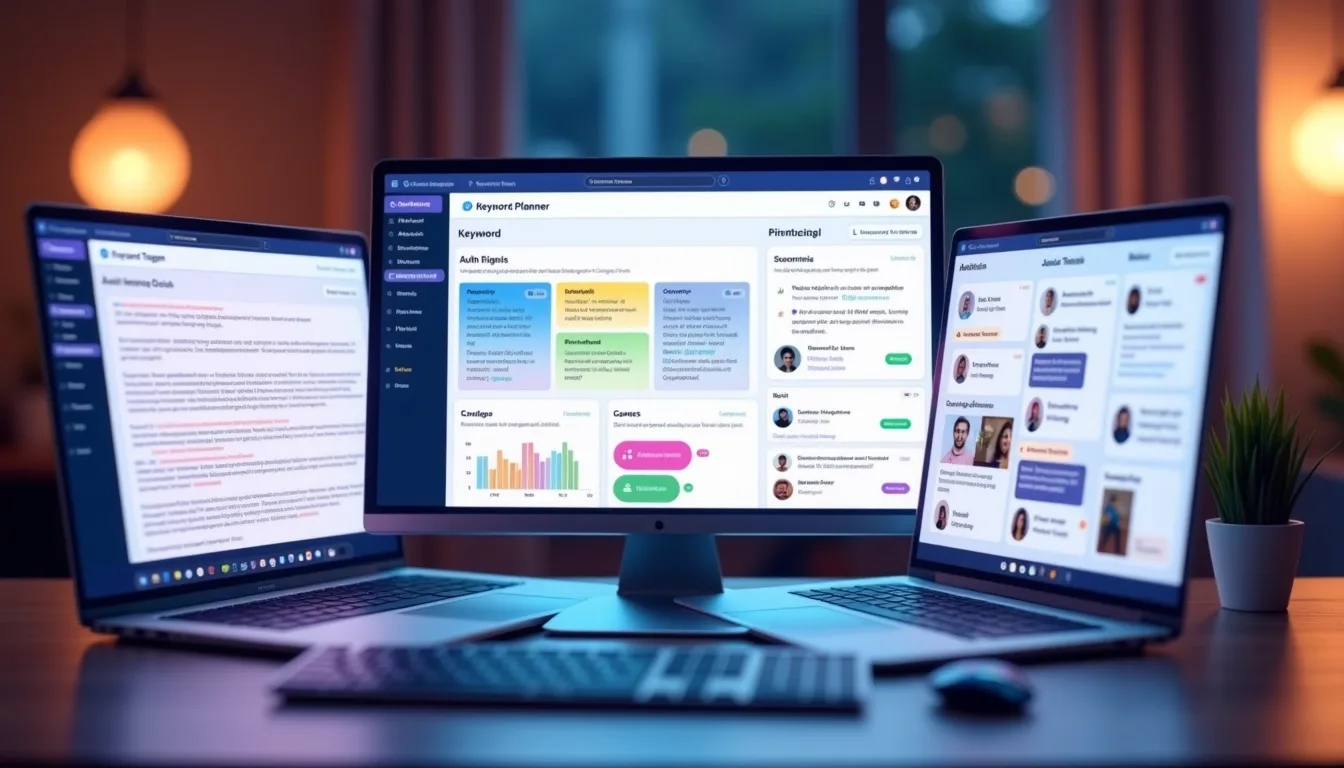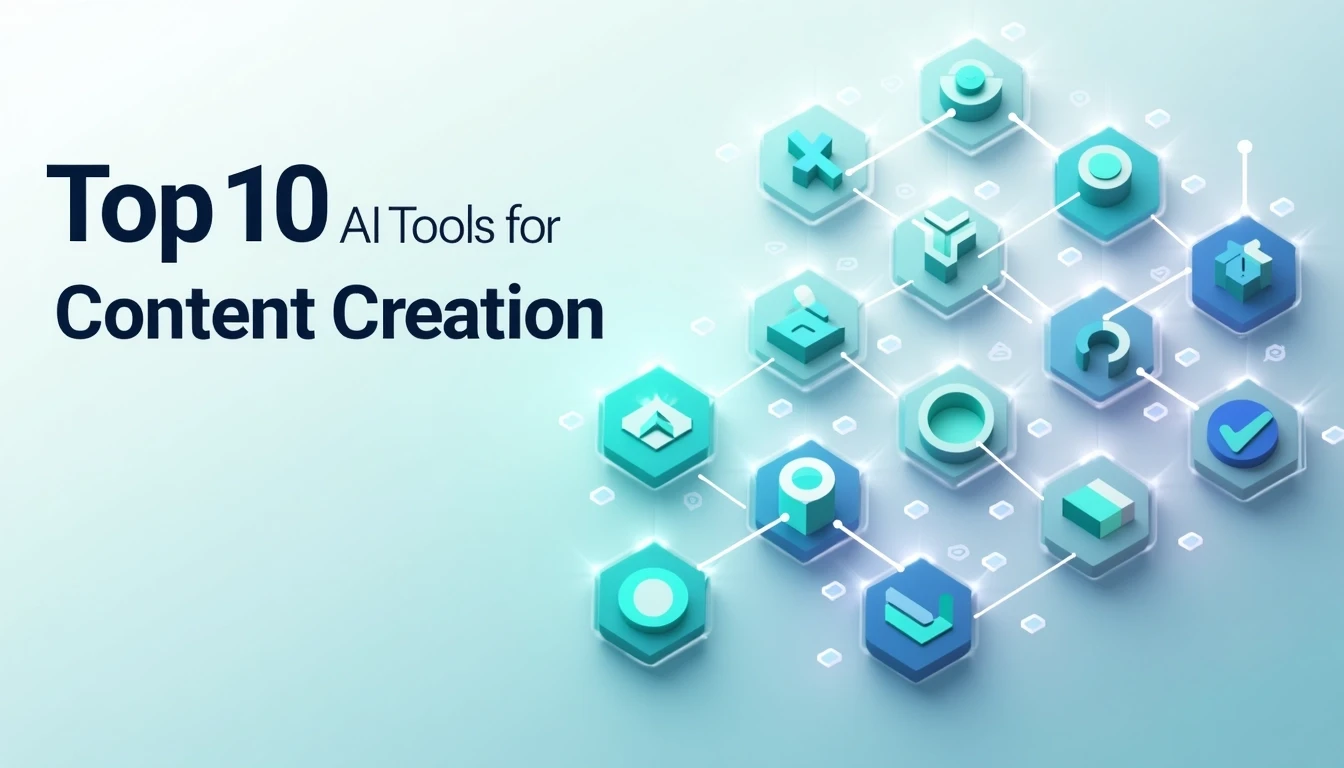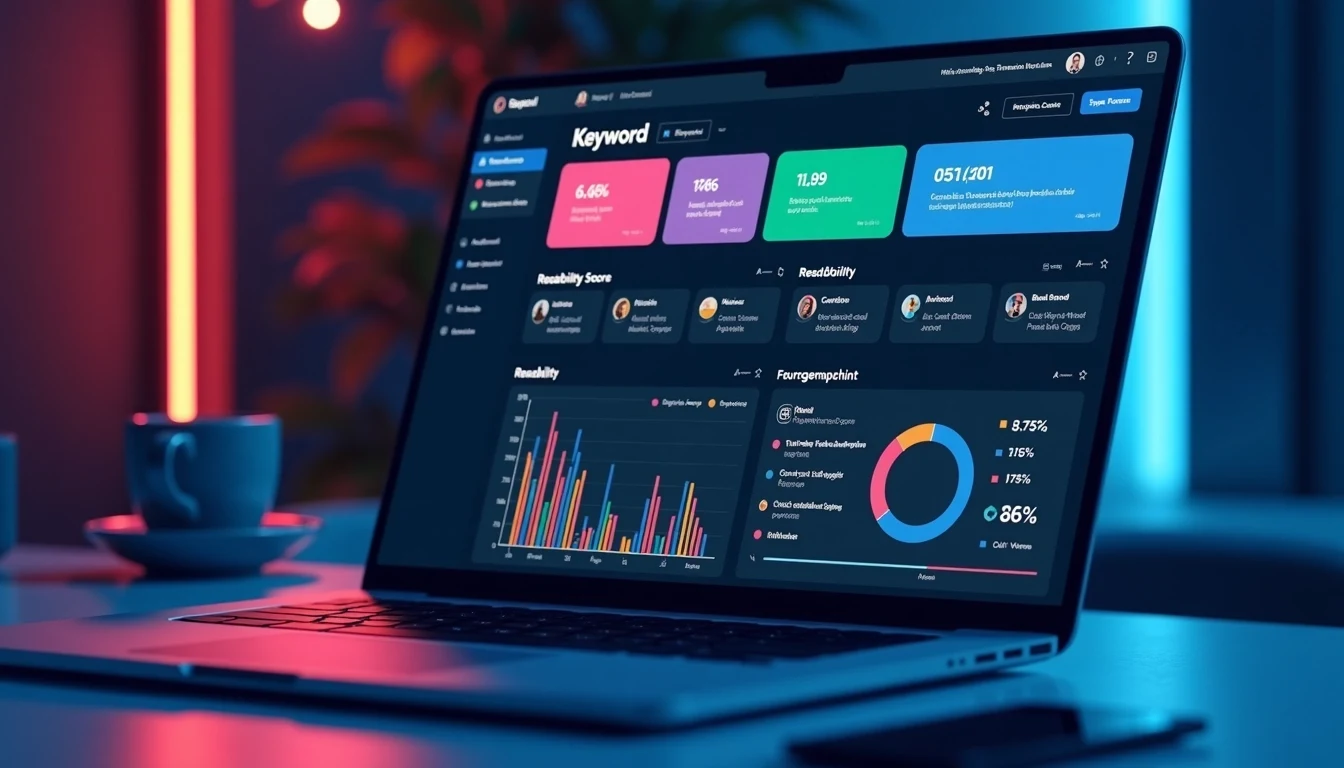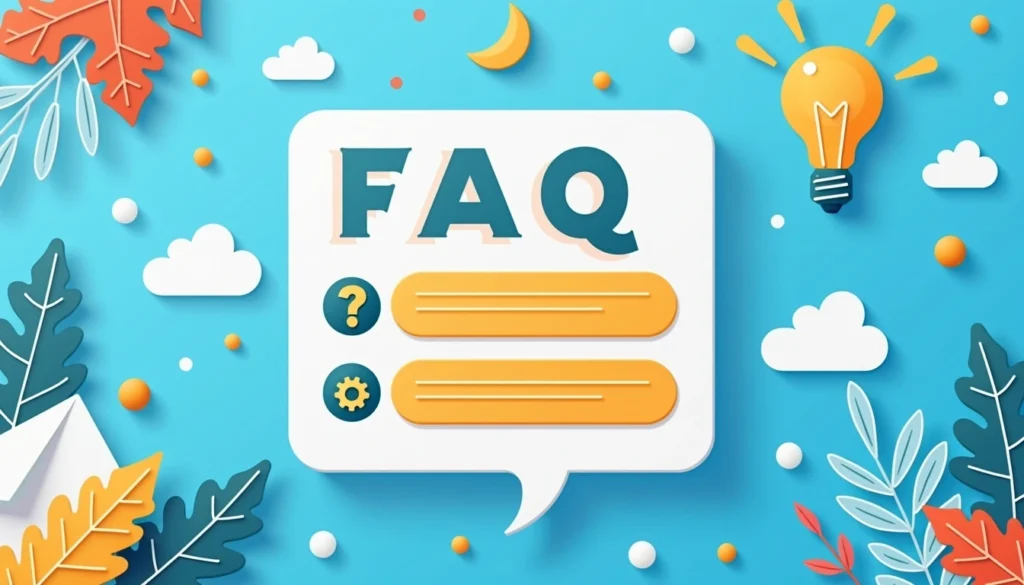The Ultimate Guide to AI Writing Tools 2025: Harnessing Free Content Generators for Authentic Content Creation
Introduction to AI Writing Tools in 2025
AI writing tools have become a game changer in content creation, transforming the way that bloggers, marketers, students, and businesses generate and optimize digital text. In 2025, writers are no longer limited by time constraints or inefficiencies—these tools now offer unprecedented quality, depth, and contextual relevance, making it possible to consistently create compelling online content. Years ago, machine-generated writing seemed like futuristic fantasy, but today’s AI advances ensure that a single platform can research, ideate, draft, optimize for SEO, and even check plagiarism, in minutes.
With growing online competition and Google’s ever-evolving algorithm, using ai writing tools 2025 isn’t just a smart move—it’s rapidly becoming necessary for anyone who manages a website or social profile. Human-centric digital experiences remain the core focus; the best AI solutions are designed to assist, guide, and collaborate, not merely automate.
The market for AI writers is now broad, spanning simple free content generator apps to enterprise-level full-stack tools. Most creators—or anyone running a business in 2025—struggle with the pressure to ship thoughtful content at scale. Here, AI-supported writing emerges as an ally, freeing users from writer’s block and tedious editing processes. Tools like Rytr, Copy.ai, and WriteSonic prioritize user customizations, letting creators generate authentic content in dozens of styles, formats, and tones, from blog posts and sales copy to academic papers or product descriptions.
This evolution in writing software means individuals can now focus on their big ideas, spending less time fighting formatting and more time engaging audiences with meaningful insights. For small businesses and solo creators, especially, the availability of robust free content generators delivers unmatched value—helping them stay competitive against players with larger teams or higher budgets.
Despite these rapid advancements, authenticity is still what differentiates successful creators and brands. The newest wave of ai writing tools 2025 is built on a foundation of ethical content guidelines, collaborative modes, and continual learning from real-world input. Most top providers now offer settings for team-based editing, brand voice training, and seamless direct integration with WordPress or popular CMS platforms. This keeps the writing both credible and nuanced.
These modern content generators don’t just churn out words—they recommend fresh story angles, smart keyword planning, and contextual formatting based on user intent and audience research. In combination with SEO-focused modules and live feedback dashboards, today’s AI tools ensure writers won’t lose the truly human touch, but actually amplify it for maximum results.

Top Features of AI Writing Tools in 2025
The top ai writing tools 2025 are built to be intuitive, versatile, and deeply integrated with the platforms that creators use daily. The best free content generator apps now deliver AI-powered templates for nearly every text type—blogs, ads, product summaries, emails, and social posts—making them essential for both rapid prototyping and deep-dive research.
These platforms also offer advanced customization, so users can shape voice, tone, structure, brand language, and even adjust writing to suit specific audiences and campaign goals. Instead of rigid prompts, today’s AI writers learn from the user’s history, tracking edits and performance, then actively re-training algorithms to match evolving preferences. This personalized experience means every piece of content produced feels distinctly unique, not mass-generated or formulaic.
Another standout feature is multi-language support and direct integration with top platforms. Users can now produce content in over 25 languages with tools like Copy.ai and HiveMind, serving global audiences from a single dashboard. Seamless integration with WordPress, Google Docs, and various workflow automation tools allows creators to draft, edit, publish, and analyze content without switching tabs or managing endless file exports.
Many free plans now include built-in plagiarism checks—an absolute must for SEO and brand trust in 2025. In addition, smart dashboards use competitor analysis to suggest keyword clusters, heading structures, and optimal word count, helping boost organic rankings faster. These features maximize productivity and content quality for everyone, from seasoned bloggers to solo newsletter writers.
Human-centric writing support is rapidly becoming a distinguishing trait for leading AI content generators. Three pillars define this movement: collaboration, ethical authorship, and contextual coaching. Collaboration tools enable real-time team editing, shared drafts, and feedback loops that help maintain a consistent brand voice across multiple contributors. Ethical authorship modules detect potentially misleading, biased, or plagiarized content, ensuring compliance with modern online standards.
Contextual coaching uses ongoing analytics, audience signals, and engagement metrics, recommending actionable improvements for style, readability, conversion, and SEO. In 2025, the combination of advanced AI with authentic human input is what makes the best free content generator tools not just useful, but transformative for content creators at every level.

Ranking the Best AI Writing Tools & Free Generators
Selecting the best ai writing tools 2025 requires an honest look at both versatility and specialty. In 2025, the writing landscape is dominated by platforms like Reword, Surfer, Rytr, WriteSonic, Jasper, Copy.ai, and Frase—each with unique strengths for specific writing needs. Reword stands out for its collaborative learning curve, ideal for teams focused on authentic, ongoing projects or websites that demand continuous updates.
Its integration with Google Search Console and ability to adapt to the user’s writing style make it perfect for those wanting a true AI-human partnership. Meanwhile, Surfer specializes in producing SEO-optimized content by analyzing live SERP data and providing actionable keyword, heading, and word count suggestions, even integrating with Google Docs and WordPress for real-time optimization. This targeted optimization is invaluable for businesses and creators fighting for high Google ranks in competitive niches.
For flexible, all-around generation, Rytr and WriteSonic lead the pack in the “free content generator” category. Rytr’s 40+ templates and support for over 30 languages, combined with affordable pricing and a robust free tier, have garnered millions of loyal users globally. It is particularly popular for short- to mid-length formats—think ads, emails, social posts, or product descriptions. WriteSonic, by contrast, is known for simplicity and scalability.
Users get access to a wide range of content types and SEO features, all run through a clean, guided workflow. Its unique Brand Voice feature lets users match outputs to existing company content, enhancing consistency and professionalism. With a generous free plan and a growing library of content templates, WriteSonic is a favorite among start-ups, small businesses, and freelance creators looking for reliable performance without breaking the bank.
On the creative and long-form side, platforms like Jasper, Sudowrite, and Frase are favorites among advanced users and business teams. Jasper focuses on producing marketing copy at scale, supporting brand voice consistency and providing API access, making it the go-to for large enterprises. Sudowrite, designed for creative writing, walks users through brainstorming, outlining, and drafting, making it a great fit for novelists and storytellers wanting more than just business-oriented outputs.
For budget-friendly, high-SEO performance, Frase stands out with its automated competitor analysis and keyword-based content outlines, providing actionable insights for bloggers and small business owners. The best ai writing tools 2025 offer feature overlap, but it’s their specialization—ease of use, collaborative support, SEO depth, creativity, or cost—that determines true fit for each user, especially creators in need of a free content generator as a foundation to build meaningful, high-quality online content.

Human-Centric AI Writing: Ethics and Real-World Impact
The rapid ascent of “ai writing tools 2025” has ignited profound conversations about ethics, responsibility, and the very essence of authentic content creation. No longer is success measured solely by the speed or volume of generated text—today’s creators and brands must ensure that AI-written material upholds values of originality, honesty, and purposeful storytelling.
Most top tools and free content generators have evolved to embed ethical principles directly in workflow, prompting users to verify sources, check for plagiarism, and label AI-generated output where relevant. Disclosure is becoming an industry norm, providing transparency for audiences and helping creators maintain their reputation. Meanwhile, global regulators are racing to define intellectual property rights, fair attribution, and privacy rules for AI-assisted authorship, setting new standards for responsible content practices.
Ethics in AI writing is rooted in the commitment to keep human voice and creative intuition at the heart of every process. The best ai writing tools 2025 focus on collaboration, guidance, and critical thinking—not unguided automation. Leading platforms like HumanizerPro and Humanize AI offer “humanization” features that transform robotic text into natural, engaging language, helping creators bypass detection by AI detectors and deliver truly unique results. This democratizes inclusion, giving users—across professions, languages, and backgrounds—a way to share authentic narratives while leveraging the strengths of automation.
Real-world business cases confirm that generative AI, when combined with thoughtful human editing, can increase efficiency by 1600%, slash costs, and open reaching new audiences without losing the personal touch. Ultimately, it’s the synergy between AI speed and human discernment that lifts these writing tools above mere content churning, enabling meaningful engagement throughout blogs, campaigns, and social channels.
Context, fairness, and critical reflection are cornerstones of ethical AI writing. Writers working with advanced tools in 2025 must review outputs for bias and fact-check for accuracy, ensuring the generated copy aligns with brand values, audience perspectives, and nuanced storytelling.
The proliferation of “free content generator” platforms doesn’t mean creativity is outsourced or the writer’s role diminished—instead, ethical workflows encourage users to ideate, research, personalize, and polish, reserving strategic control and creative direction at every stage. This transparent, human-centric approach delivers deeper reader trust, organic reach, and sustainable long-term growth. As AI writing tools adapt, the most successful creators in 2025 are those who build collaborative routines that fuse technical possibilities with personal expertise—crafting content with impact, empathy, and ethical clarity.

Optimizing for SEO and Audience Engagement with AI Writing Tools
In 2025, mastering SEO and audience engagement is easier than ever with the capabilities embedded in modern “ai writing tools 2025.” These platforms are designed not only to generate text but also to optimize it for maximum search visibility and reader retention, making them indispensable tools for bloggers, marketers, and businesses alike. The integration of keyword analysis, content gap detection, and metadata suggestions into AI writing workflows empowers users to craft fully SEO-optimized content without requiring deep technical knowledge.
For instance, many free content generator tools automatically recommend primary and secondary keywords—like the crucial “ai writing tools 2025” and “free content generator”—and naturally weave them into the text. This lets creators avoid keyword stuffing while enhancing relevance, readability, and Google rankings, fulfilling critical SEO best practices.
Another vital advantage of these tools is their ability to enhance the user experience through content structuring. AI writing tools dynamically suggest headings, subheadings, bullet points, and concise paragraphing that improve scannability and engagement on both desktop and mobile devices. This structural intelligence increases time-on-page and decreases bounce rates, signaling to search engines that the content meets user intent. Moreover, many writing tools now incorporate readability analysis—providing real-time feedback on sentence length, passive voice, and complexity—to ensure the generated content appeals broadly and suits diverse audience segments.
Engagement is further amplified with AI-powered personalization features that customize messages based on audience data and platform-specific trends. The seamless capability to produce social media snippets, meta descriptions, and call-to-action (CTA) phrases represents a game-changer for distributing content efficiently across multiple channels without extra manual work.
In addition to SEO mechanics, the best “ai writing tools 2025” support iterative optimization by tracking post-publication performance and suggesting refinements using visitor behavior and SERP metrics. This continuous improvement cycle is instrumental in maintaining organic traffic growth and adapting content to evolving market trends. By combining long-tail keyword targeting with conversion-focused language generated by AI, creators can attract niche audiences and drive meaningful interactions, such as newsletter sign-ups, purchases, or social shares.
Businesses leveraging free content generators can inexpensively scale their content strategies with high precision, outperforming competitors relying solely on human effort. Ultimately, AI writing tools in 2025 offer a synergy of technology, creativity, and data-driven insight that empowers users to not only write effectively but also build brands and loyal communities through intelligent, authentic content.

Future Trends and Conclusion
Looking ahead, the landscape of “ai writing tools 2025” is poised for even greater sophistication, blending emerging technologies with deeper human-AI collaboration. One significant trend is the rise of multimodal content generation—AI that integrates writing with images, audio, and video to create richer, more immersive storytelling experiences. As virtual and augmented reality experiences become mainstream, AI tools will enable creators to develop content that adapts dynamically across platforms, languages, and consumption modes.
Another development is the increasing emphasis on ethical AI frameworks embedded within these tools, supporting creators in navigating intellectual property challenges and content authenticity in real-time. Expect more startups and established companies alike to invest heavily in user customization features, allowing fine-tuned control over tone, style, and cultural resonance to ensure narratives remain authentic and human-centered.
The expansion of AI-powered multilingual content generation will also open global markets to creators with limited resources, as real-time translation and localization become seamless parts of the writing workflow. This empowers brands and individuals to engage international audiences more effectively, overcoming language barriers without needing expert translators. Moreover, AI’s growing ability to learn from user feedback and intent will lead to smarter content assistants that function as collaborative partners—offering suggestions, historical insights, and performance predictions tailored uniquely for each project. Such AI-human synergy will redefine content strategy, turning routine writing tasks into opportunities for innovation and impactful communication.
In conclusion, ai writing tools 2025 represent a powerful evolution in digital content creation, democratizing advanced technology for all creators while maintaining a focus on authenticity and ethical use. Whether utilizing a free content generator to spark ideas or relying on premium solutions for enterprise-grade SEO optimization, today’s AI tools equip users to produce high-quality, human-like content faster and with greater confidence than ever before.
As these technologies continue to mature, the future belongs to those who balance AI’s efficiency with genuine human insight and empathy—ensuring each piece of writing resonates personally with its audience. Embracing AI not as a replacement but as an enhancement paves the way for richer storytelling, stronger brand presence, and more meaningful engagement in the digital era.
Discover more insights on AI writing tools and free content generators at AI Tech Unboxed—your trusted source for authentic, innovative tech content.

FAQs about AI Writing Tools 2025 and Free Content Generators
Q1: What are the key benefits of using AI writing tools in 2025?
AI writing tools in 2025 significantly enhance productivity by automating research, drafting, and SEO optimization while maintaining a human-like tone. They also support collaboration, multilingual content, and ethical guidelines, making high-quality writing accessible and scalable for creators and businesses.
Q2: Are free content generators effective for professional writing projects?
Yes, many free content generators offer powerful capabilities suitable for professional use, especially for shorter content like marketing copy, social media posts, and email templates. However, for long-form or highly specialized content, premium AI tools with more advanced features may be preferable.
Q3: How do AI writing tools ensure ethical content creation?
Top AI writing tools integrate plagiarism detection, bias checks, and transparency features prompting user review and disclosure. Ethical frameworks guide these tools to prioritize authenticity, respect for intellectual property, and human review before publication.
Q4: Can AI writing tools help improve SEO rankings?
Absolutely. Modern AI writing tools analyze keywords, competitor content, and readability, suggesting optimizations that align with current search engine algorithms. This results in better targeting, increased organic traffic, and improved audience engagement.
Q5: Will AI writing tools replace human writers?
No, AI writing tools are designed to assist and augment human creativity, not replace it. The most effective content emerges from collaboration, where AI handles repetitive tasks while human writers provide creativity, nuance, and ethical judgment.



